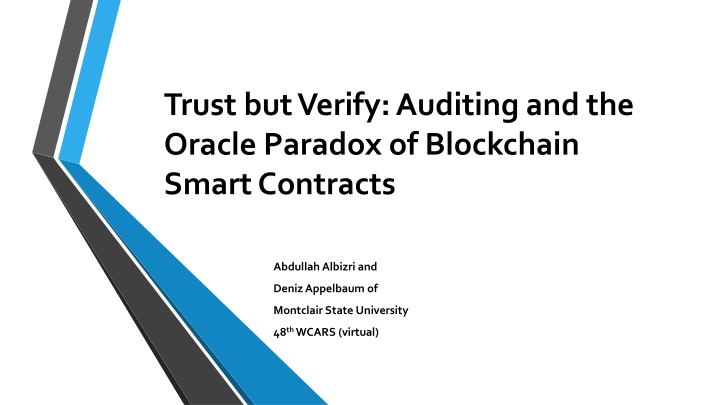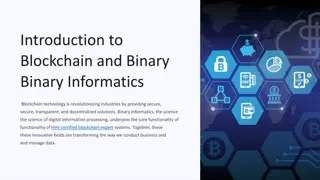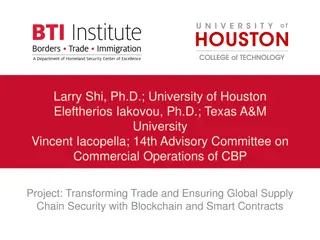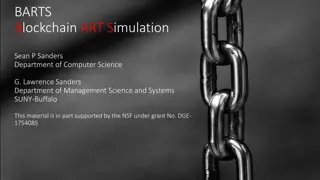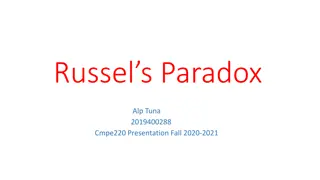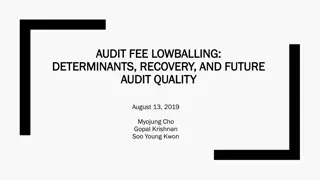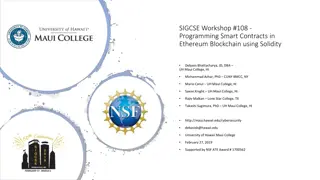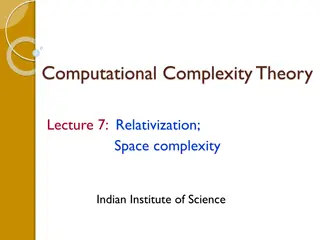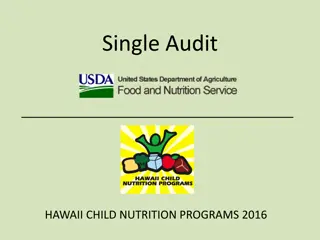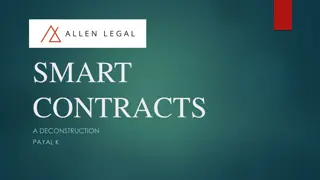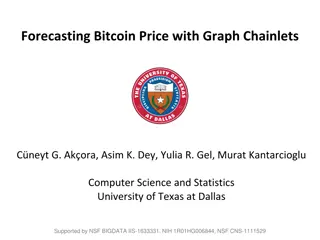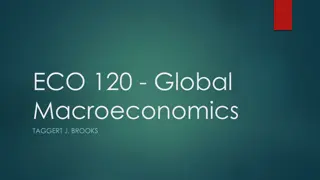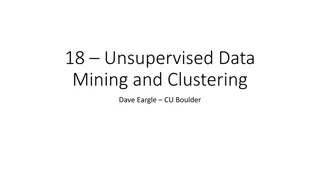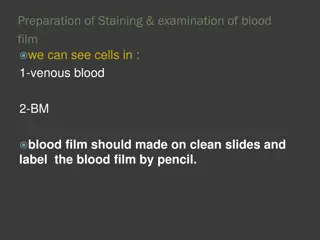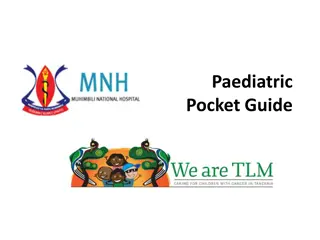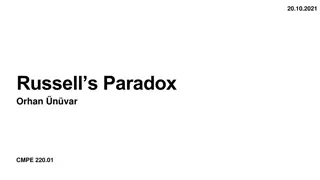Audit and Oracle Paradox in Blockchain Smart Contracts
Auditing practices in the realm of blockchain smart contracts, focusing on verifying information accuracy while exploring the potential of IoT integration for enhanced supply chain traceability and transparency.
Download Presentation

Please find below an Image/Link to download the presentation.
The content on the website is provided AS IS for your information and personal use only. It may not be sold, licensed, or shared on other websites without obtaining consent from the author.If you encounter any issues during the download, it is possible that the publisher has removed the file from their server.
You are allowed to download the files provided on this website for personal or commercial use, subject to the condition that they are used lawfully. All files are the property of their respective owners.
The content on the website is provided AS IS for your information and personal use only. It may not be sold, licensed, or shared on other websites without obtaining consent from the author.
E N D
Presentation Transcript
Trust but Verify: Auditing and the Oracle Paradox of Blockchain Smart Contracts Abdullah Albizri and Deniz Appelbaum of Montclair State University 48thWCARS (virtual)
Supply Chain Management Industries: are seeking ways to improve efficiencies. Complicating these efforts is the fact that there are huge inconsistencies about how processes are recorded, due to many steps & different parties involved, with their many diverse systems. Supply chains are vast and complex with many product versions moving through multiple parties Product production is required to be more flexible and responsive to client/customer demands and customization.
Blockchain Blockchain could be game-changer, particularly for those industries facing strong regulatory/legal pressures: By immutably recording these information flows throughout the entire SC process, all participants could track legal title, technical, environmental, social, financial, and regulatory attributes. Smart contracts, coded to execute automatically, can create additional efficiencies in the blockchain-enabled supply chain.
Research Question Many SCM systems depend on 3rdparty verifiers such local government officials to validate the origins of raw material resources. The question is whether the blockchain virtual world actively reflects the actual physical events and conditions in the chain edges and nodes. Provenance of origin could be an issue, even with Blockchain, depending on the context.
Objective We develop a BPM of a Blockchain Smart Contract-enabled Supply Chain with IoT as the third-party oracle participant, utilizing Design Science research (DSR). With IoT as one of its blockchain participants, a supply chain may, in many situations, realize complete end-to-end traceability and transparency provenance.
Methodology Design Science Research (DSR). The six phases are: 1. Define the Objectives of a solution 2. Development of the Methodology 3. Design and Development of an Artifact which meets the solution objectives 4. Demonstration of the Solution 5. Evaluation of the Solution 6. Communication of the Problem and the Solution
Objective of the Solution Supply Chain Issues The gem and precious metals jewelry supply chains serve as a good example of this complexity. The jewelry industry consists of international supply chains for both gems and metals, both of which are subject to strict regulations as to where and how they were mined. At many layers of the SC, participants are asked to provide due diligence as to the veracity and origin of the gem/mineral. Participants are also notified that they could be audited at any time regarding any documentation of these referenced gems/minerals. Clearly, regulatory compliance comprises the bulk of audit effort in the gem industry.
Objective of the Solution IoT, Blockchain & Smart Contracts Blockchain technology was used to develop a digital currency - Bitcoin -via open, peer-to-peer, and cryptographically stamped data sharing. In this context, blockchain is an enabler of a trackable, transparent, and secure financial transactions without the need for a central bank authority or a controlling intermediary.
Objective of the Solution The Oracle Paradox A blockchain oracle is defined as an entity or agent that retrieves and authenticates information, occurrences, or data feeds from the physical real-world and provides them to the blockchain for smart contracts to execute. The purpose for oracles stems from the need of input for smart contracts to verify the conditions fulfillment to comply with the terms of the contract. Consequently, blockchain oracles act as third-party gateways for the blockchain to the external world, and they have sole control over input that reaches the smart contracts.
Objective of the Solution The Oracle Paradox Oracles have complete power on the authenticity and accuracy of information needed for the proper execution of smart contracts (in addition to the security and privacy of the information). Blockchain system which is built on the premise of trustless agents has to rely on trusting the oracle gateway. Oracle Paradox or Oracle Problem defined as the trust, accuracy, reliability, and security problems that stem from the need to trust oracles to link the physical world and the virtual world, which is based on the trustless use of blockchain nodes and smart contract. Oracle Paradox is labeled as a critical obstacle to the diffusion and adoption of blockchain systems.
DEVELOPMENT OF THE METHODOLOGY IoT devices IoT is the network of physical assets that are embedded with sensors, tags, electronics, and internet connectivity to record, collect, and relay information about its activities. IoT enables a physical object to exist virtually or electronically. For example, an RFID tag may be attached to a box (Thing) and this tag is read by a sensor reader attached to a nearby hovering drone (Thing). The other critical component here would be the network, which receives the signal output by the drone RFID sensor and then records this information to the blockchain. 12
DEVELOPMENT OF THE METHODOLOGY IoT, Blockchain & Smart Contracts There is scant published research discussing the intersection of IoT and blockchains, let alone their role in smart contracts. All levels of the supply chain process should be captured by IoT and subsequently recorded on the blockchain. But, the level of recording granularity should be appropriate for the specific use case. For example, one might want to place a sensor on a case of oranges as opposed to tagging each orange. One might want to place a sensor or tiny QR tag on all diamonds over 1 carat and record this process using a drone or fixed camera. Since diamonds are quite high in value, such a granular level of IoT tracking is appropriate. 13
DEVELOPMENT OF THE METHODOLOGY IoT, Blockchain & Smart Contracts The management and auditors of any company that seeks to apply blockchain smart contracts and IoT to their supply chain should consider: Understand the supply chain process and all of the participants Examine upstream implications in addition to downstream Classify risks in terms of their likelihood and probability and severity of impact Assess whether blockchain and IoT would mitigate these risks Start small with least complex & costly application, which will also be a use case with high benefit Try and fail often until the solution is sustainable and provides reliable audit evidence Collaborate with others in the network and external experts Scale progressively to each layer of the supply chain, undertaking the same iterative process. 14
Acquisition Cycle in the Smart Contract IoT enabled Blockchain of a mining SC
EVALUATION OF THE SOLUTION From a management perspective, these issues should be considered: Is there a continuity of reliable information, from start to finish? Is this information readily accessible? Are the links between the physical and virtual flows in sync and secure? Faithful? Are there codes of conduct and controls developed for all aspects of this process? From the auditor s perspective: Is the information accurate and can its provenance be verified reliably? Is the information traceable/re-performable? Does the blockchain information faithfully represent the physical events? What is the governance in place for this process? Have internal controls been developed which could mitigate perceived risks and their likelihood and impact?
Areas for Future Consideration IoT-enabled Contract Asset IoT Smart Considerations 1) How to tag difficult assets such as moving animals, liquids, stockpiles, and organic matter? 2) How to guarantee that all tagged assets will be read by a sensor? 3) How to verify that the tag accurately represents the item it is attached to? 4) How to tag very small items? 5) How to fly drones and/or install cameras in mines and other challenging locations? 6) What about areas with poor internet/network connectivity? 1) Are there controls regarding permissions and nodes? 2) What happens if consensus is not reached at one of the steps? Smart Contracts IoT Contracts and Smart 1) IoT devices usually require low processing speed and networks whereas blockchain requires high CPU, memory, and power capabilities how to resolves? 2) Most IoT devices and networks require small storage whereas blockchain platforms require large storage how to resolve? 3) Some IoT devices utilize low bandwidth access, which may introduce synchronization issues?
